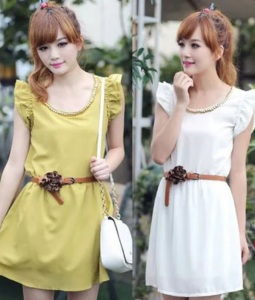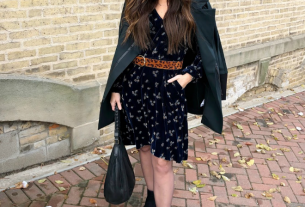In the ever-evolving landscape of fashion, a new era is dawning—one where style meets sustainability. As consumers become more conscious of their environmental footprint, the demand for eco-friendly fashion is on the rise. In this article, we explore the paradigm shift toward sustainable fashion branding, delving into the importance of eco-friendly practices and how they’re shaping the future of the industry.

1. The Urgency of Sustainable Fashion
Environmental Impact of Fast Fashion: Fast fashion, with its rapid production cycles and disposable mentality, has taken a toll on the environment. From excessive water usage to textile waste, the traditional fashion industry has contributed significantly to environmental degradation.
The Call for Change: With increased awareness about climate change and ethical concerns, consumers are actively seeking brands that prioritize sustainability. This shift in consumer behavior is steering the fashion industry towards a more eco-conscious approach.
2. Elements of Sustainable Fashion Branding
Transparency and Ethical Practices: Sustainable fashion brands embrace transparency in their supply chains. From sourcing materials to manufacturing processes, ethical practices are communicated openly to build trust with consumers.
Commitment to Fair Labor: Beyond environmental concerns, sustainable fashion involves fair treatment of workers throughout the supply chain. Brands committed to fair labor practices contribute to a holistic and ethical approach to sustainability.
3. Materials Matter: Choosing Eco-Friendly Fabrics
Organic Cotton: Organic cotton reduces the environmental impact of traditional cotton farming, which often involves heavy pesticide use. Brands incorporating organic cotton into their collections promote soil health and biodiversity.
Recycled Fabrics: Embracing recycled materials, such as recycled polyester or upcycled fabrics, reduces reliance on virgin resources and minimizes waste. This practice aligns with circular economy principles.
Innovative Alternatives: Sustainable fashion brands explore innovative alternatives, such as fabrics made from bamboo, Tencel, or even pineapple fibers. These materials offer eco-friendly alternatives without compromising on style.
4. Circular Fashion: Extending the Lifespan of Garments
Design for Longevity: Sustainable fashion involves designing garments with longevity in mind. Durable materials and timeless styles encourage consumers to invest in quality pieces that withstand trends.
Take-Back Programs: Implementing take-back programs allows brands to collect and recycle old garments, closing the loop on the fashion lifecycle. This initiative reduces textile waste and encourages responsible disposal.
5. Communicating Sustainability: The Role of Brand Narrative
Educating Consumers: Sustainable fashion branding involves educating consumers about the environmental impact of their choices. Brands can use their platforms to raise awareness about sustainable practices and empower consumers to make informed decisions.
Authenticity in Storytelling: Authenticity is key in conveying a brand’s commitment to sustainability. Share your journey, challenges, and successes in adopting eco-friendly practices. Authentic storytelling fosters a deeper connection with consumers.
6. Certifications and Standards
Eco-Certifications: Obtaining recognized eco-certifications, such as GOTS (Global Organic Textile Standard) or Fair Trade, adds credibility to a brand’s commitment to sustainability. These certifications validate eco-friendly practices.
Conclusion: The Fashion Revolution Begins with You
Sustainable fashion branding isn’t just a trend; it’s a necessary evolution in response to the environmental challenges our planet faces. As a consumer, the choices you make can drive positive change in the fashion industry. Likewise, as a brand, embracing sustainable practices not only aligns with ethical principles but also positions you at the forefront of a transformative movement. The threads of change are weaving a new narrative in fashion—one where style and sustainability coexist harmoniously, creating a brighter and more responsible future for the industry and the planet we call home.





